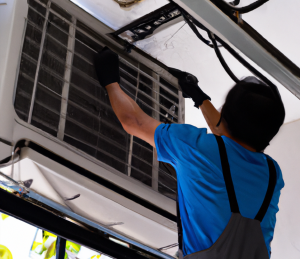SEER, which stands for Seasonal Energy Efficiency Ratio, is a metric used to measure the efficiency of air conditioning systems. It is an important factor to consider when choosing a new air conditioner for your home or business, as a higher SEER rating can result in significant energy savings and lower cooling costs.
SEER is calculated by dividing the total cooling output of an air conditioner over the course of a season by the total energy consumed during that same period. The result is expressed as a ratio, with higher numbers indicating greater efficiency. For example, a system with a SEER rating of 16 is more efficient than one with a rating of 14.
In the United States, the minimum SEER rating required for residential air conditioners is 14, while commercial units must have a minimum rating of 13. However, many modern systems are rated much higher, with some reaching SEER ratings of up to 22.

It’s important to note that the actual energy savings achieved with a high-SEER air conditioner will depend on various factors such as climate, usage patterns, and proper maintenance. However, in general, a higher SEER rating can translate into lower energy bills, reduced greenhouse gas emissions, and a more comfortable home or business environment.
When shopping for a new air conditioner, it’s recommended to compare SEER ratings and choose a system with the highest rating that fits within your budget. A system with a high SEER rating may cost more upfront, but the long-term savings on energy costs can make it a more cost-effective choice in the long run.
In conclusion, SEER is a crucial metric to consider when choosing a new air conditioner, as it provides valuable information on the system’s efficiency and can help you make an informed decision that is both environmentally friendly and cost-effective.
